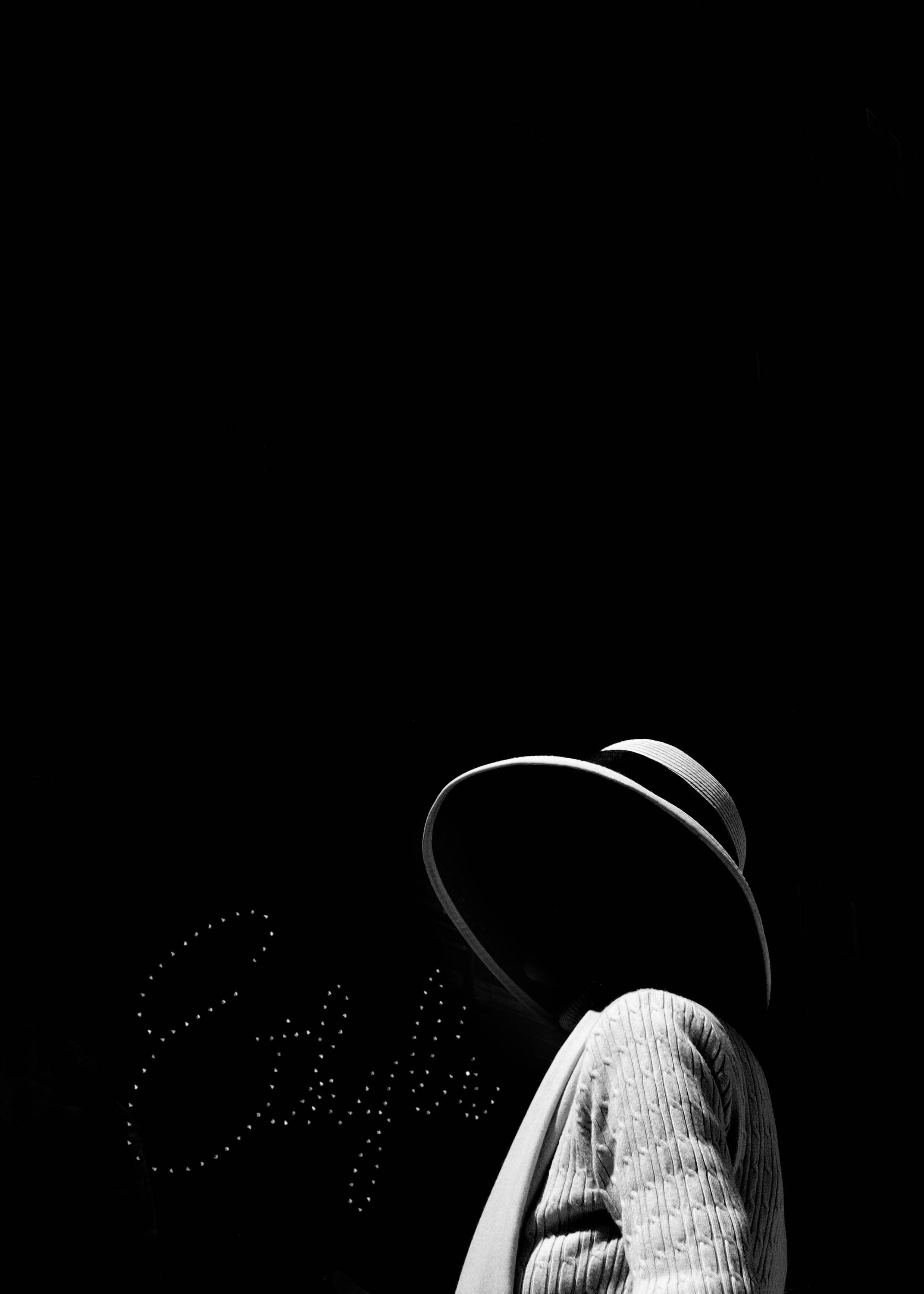All images by Nina Welch-Kling. Used with permission.
“I often pinch myself and look around with the eyes of a child marveling at the organized chaos around me,” says Nina Welch-Kling, as she talks about her love for street photography. She recently won our street photography competition with an exceptionally good photo that stood out from the high standard of submissions. Aside from her recent success, Welch-Kling has already been making her presence felt in the street photography community. Her work is timeless, and her scenes tell a story. It was our pleasure to speak with her and learn more about her background and approach to the candid frame.
Phoblographer: You grew up in Germany. How much did your childhood impact your relationship with street photography?
NK: I grew up in Schweinfurt, a small, sleepy town in southern Germany where everyone knew everyone – or at least it seemed that way to me at the time. As the daughter of a Holocaust surviving father and German mother, observing the immediate world around me was, and is, part of my D.N.A. The German word Wanderlust, which means a strong desire to travel, best describes why I choose to move to the U.S. when I was in my twenties to continue my education. I earned a B.F.A. from the School of the Art Institute of Chicago and an M.F.A. in Architecture from the University of California, Los Angeles.
Since childhood, I have craved the freedom to roam the streets and explore unreservedly. New York City, with its diverse neighborhoods, satisfies my need to seek and collect a wide variety of impressions that I enjoy capturing in my photography.
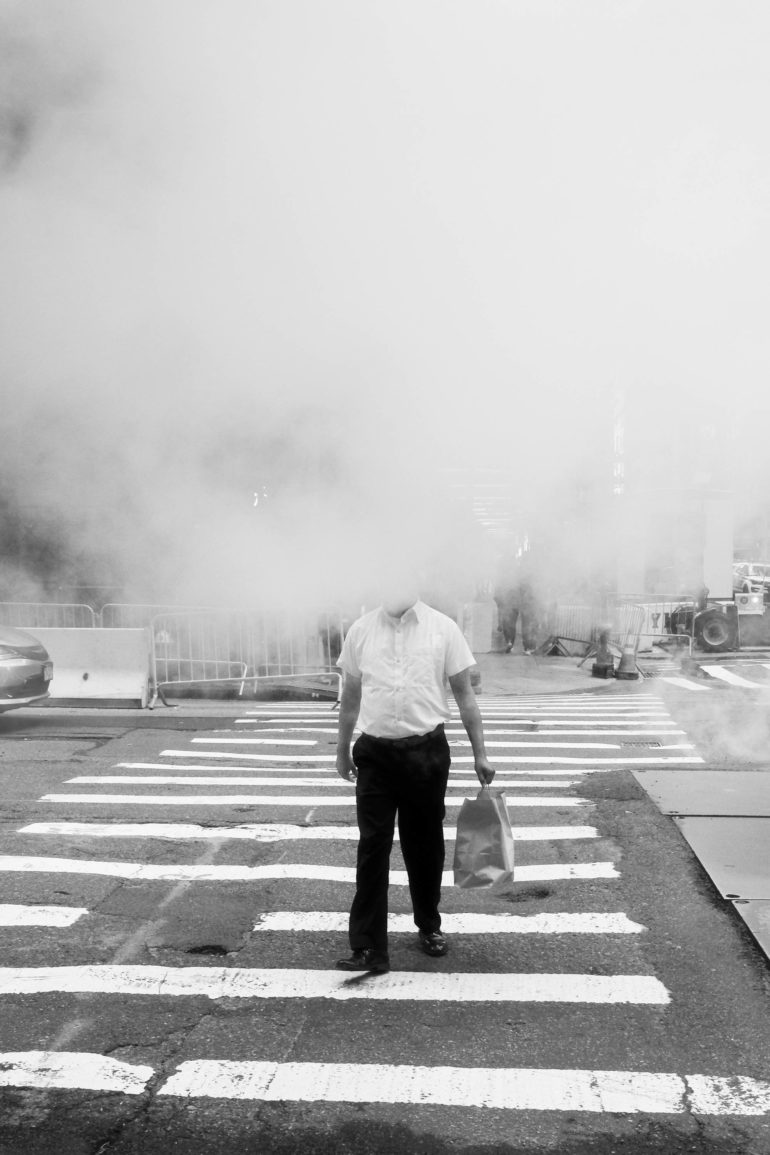
Phoblographer: Has it always been about street photography, or have you dipped your creative toes into other photography genres?
NK: Before becoming obsessed with street photography, I spent some time photographing flowers. Yes, flowers – they are very patient and accessible models that gave me the opportunity to hone my technical skills. Once I switched to street photography, I never looked back, and I enjoy every second that I explore the streets and interact with people.
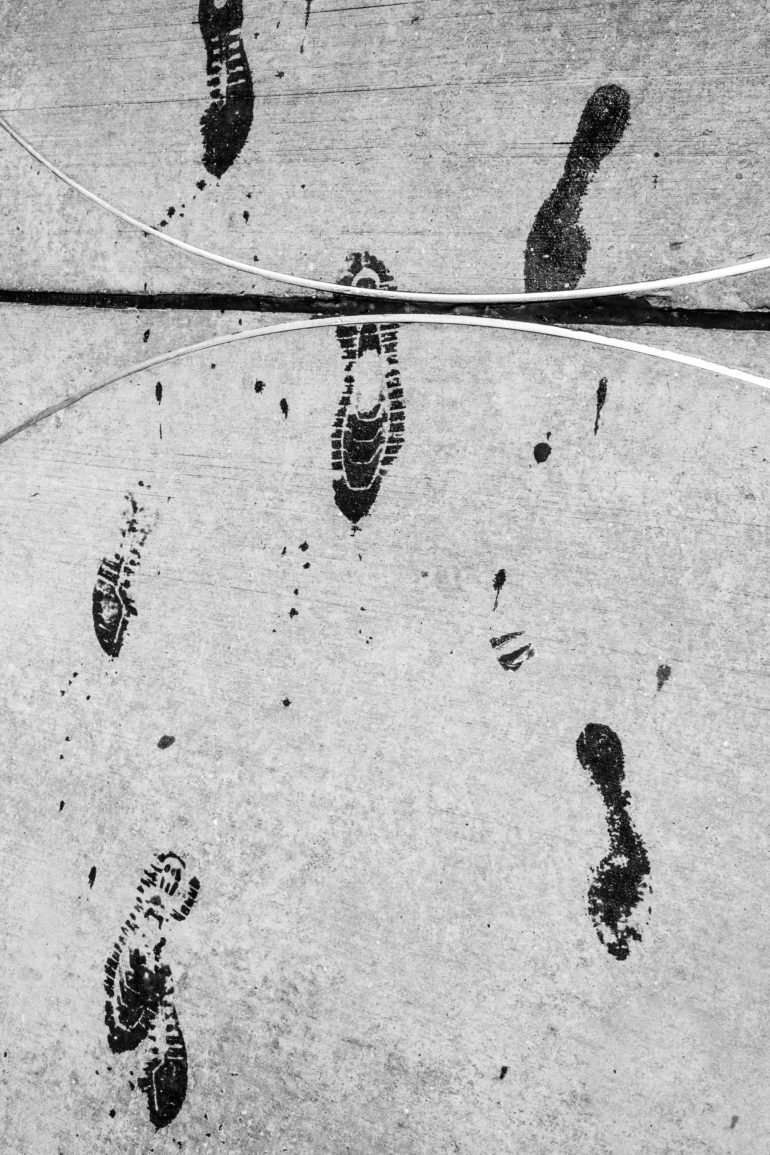
Phoblographer: Tell us about your approach to shooting street photography. Do you work like a ninja, or do you like to make your presence felt when creating the candid frame?
NK: I am always visible, and any approaching pedestrian can see me very clearly with my camera. In New York City, with its many tourists, a photographer is part of the urban landscape, and most people just go about their business. However, if they object, I will try to engage the person and de-escalate the situation, if necessary, which often is as enjoyable as taking the photo.
Before becoming obsessed with street photography, I spent some time photographing flowers. Yes, flowers – they are very patient and accessible models that gave me the opportunity to hone my technical skills.
Phoblographer: How has your background in architecture influenced how you shoot street photography?
NK: I believe my love for architecture is evident in my work. My training in architecture informs how I see the world as many rules of architecture are applicable to photography. For example, the importance of light and shadow, how people move through space, and the use of a grid that implies a sense of order and scale. Architecture is an important element in my photography as it illustrates a sense of time, place, and scale.
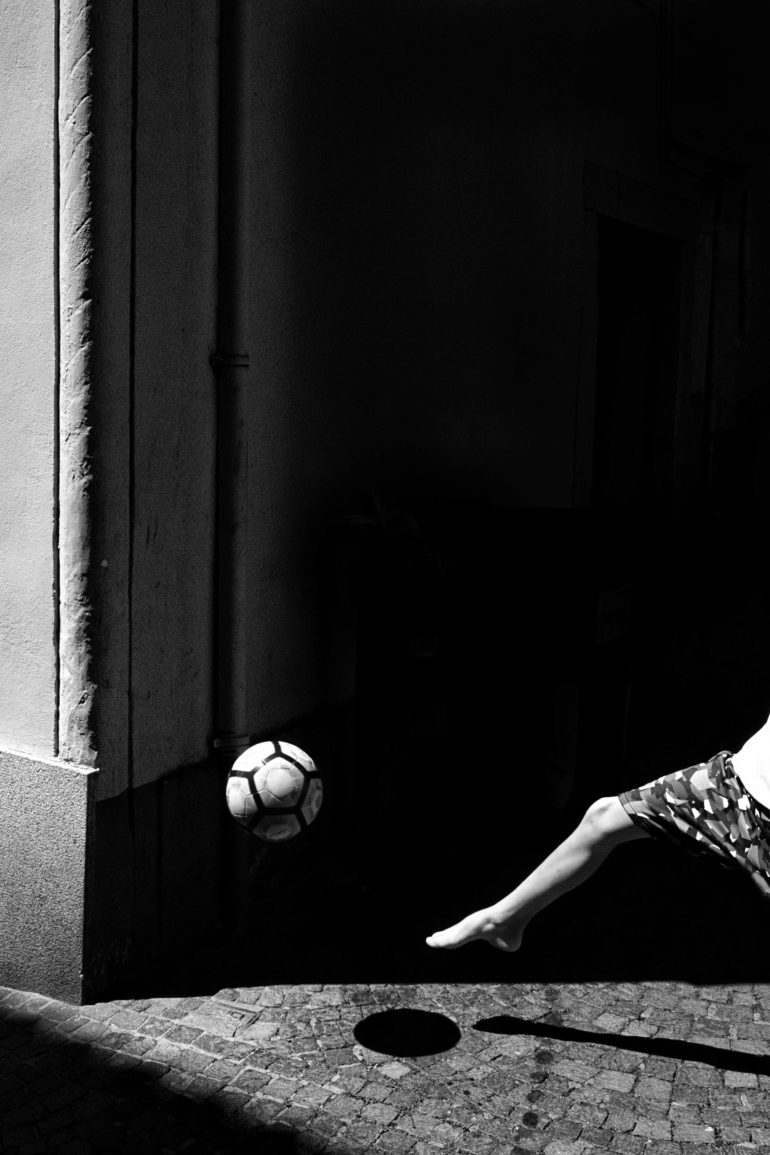
Phoblographer: You recently won The Phoblographer’s street photography competition — fantastic shot by the way! In your words, what did you like about the image that you submitted?
NK: As a street photographer, most photos I take are ordinary and don’t have the special magic ingredients that make my heart sing. In the photo I submitted, many things came together in front of me – the subject with the translucent balloons, the way the sun altered the perception and made the balloons glow, and the uncluttered composition. I saw an urban angel with wings of balloons. Once I downloaded the image at home, I noticed the sunbursts on the highlights, which to me, were the icing on the cake.
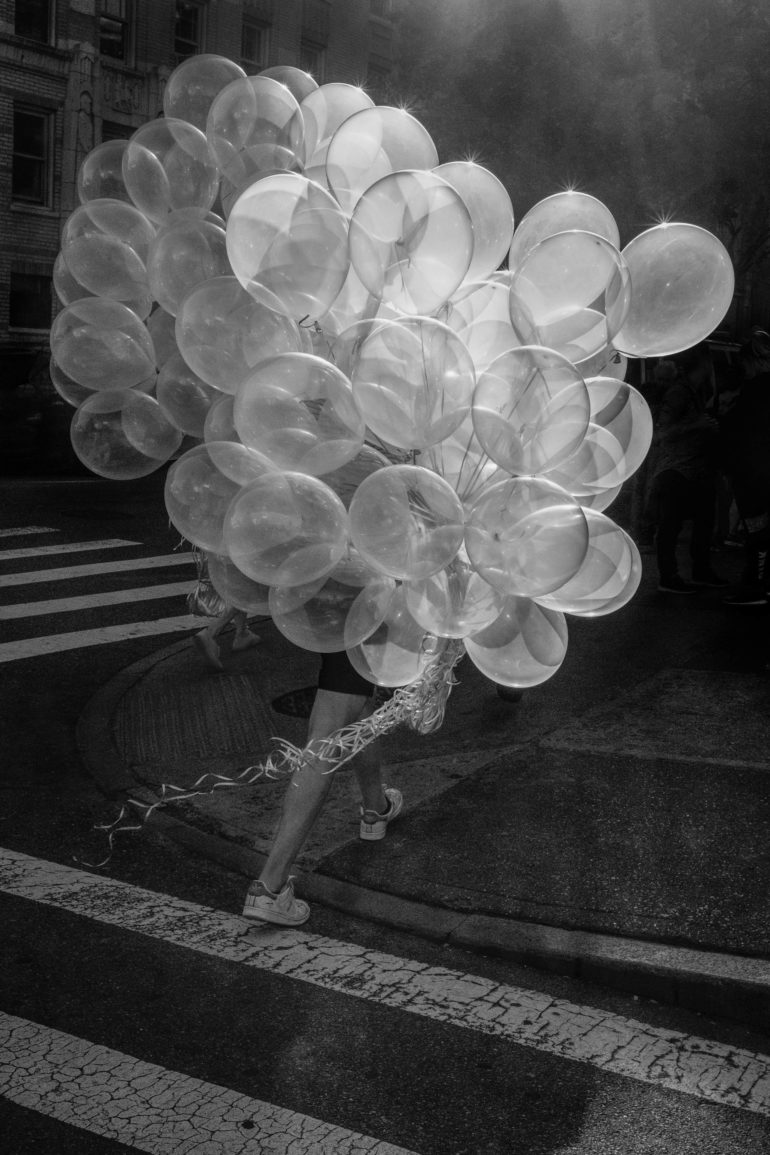
Phoblographer: Predominantly, your work is black and white. What do you need to see and feel from an image when you decide to mix it up and publish a photo in color?
NK: I use black and white to clarify and simplify a scene. If the color adds to the photo to tell the story, I will use color.
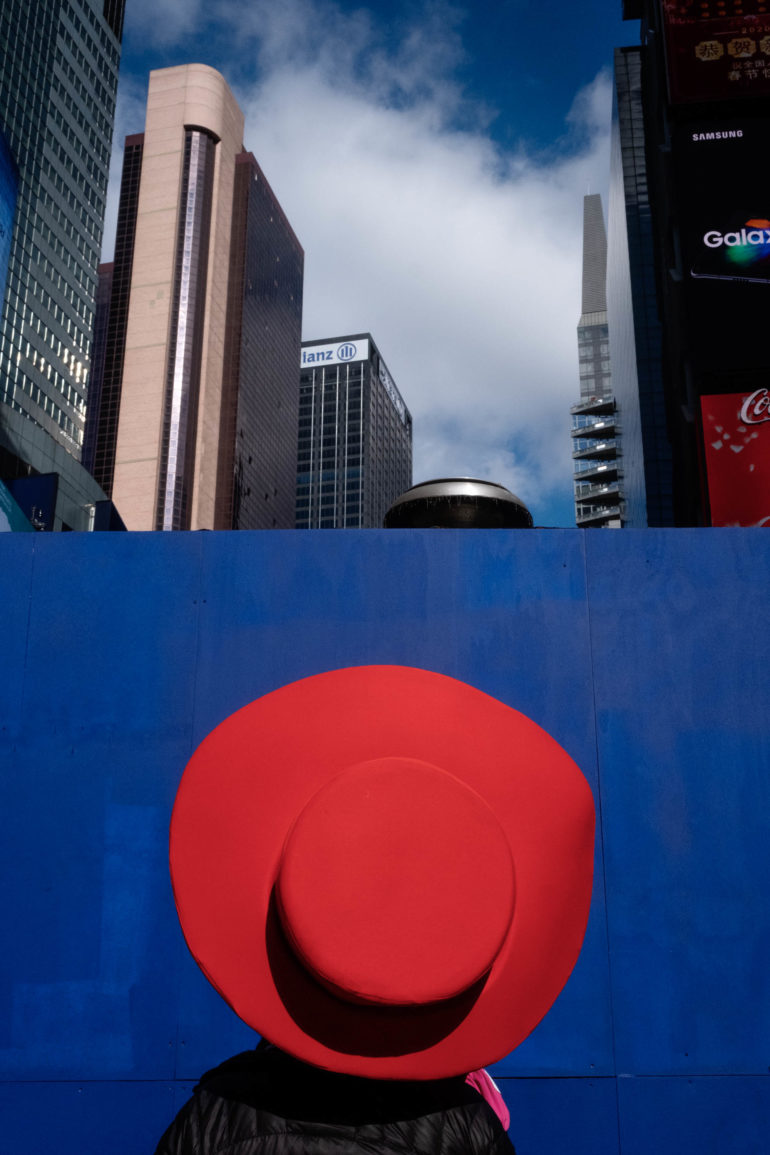
Phoblographer: Tell us more about your project, Duologues. Where did the inspiration come from and what was the overall aim of the work?
NK: I have always admired diptychs created throughout art history and, most recently, the diptychs by the photographer Ralph Gibson. I started my series called “Duologues” by playing a game of Memory: finding in the vast collection of my street images shapes, gestures, and symbols that rhyme. The rhyming may occur within the major elements in the image, such as the subject, or in minute detail that otherwise might go unnoticed. By pairing two photos that occurred at different moments in time, the story that emerges can bring them together and create uncanny relationships that are open for interpretation by the viewer.
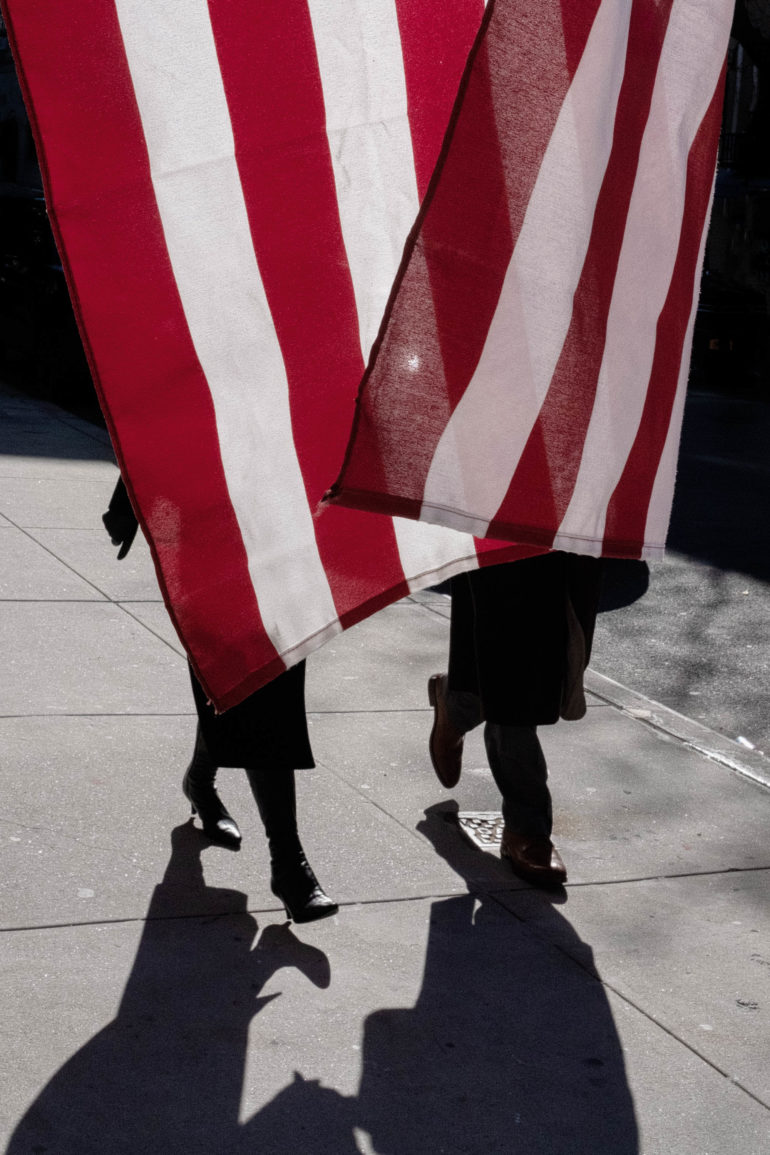
Phoblographer: 2020 has been quite the year. How has your ability to shoot street photography been impacted with all that’s happened?
NK: It has been tough! I continually wonder how Covid-19 will change the approach I take in photographing on the street. I crave personal connection with the people I photograph and have very little interest in showing people hiding behind masks. People isolating in their homes has provided me an opportunity to explore a more quiet side of photography. For the last three months, I have gone out at night and my photos are darker with less contrast —- a reflection of how I feel emotionally. How can the city be photographed without the people that make the city come alive and yet still sense their constant presence?
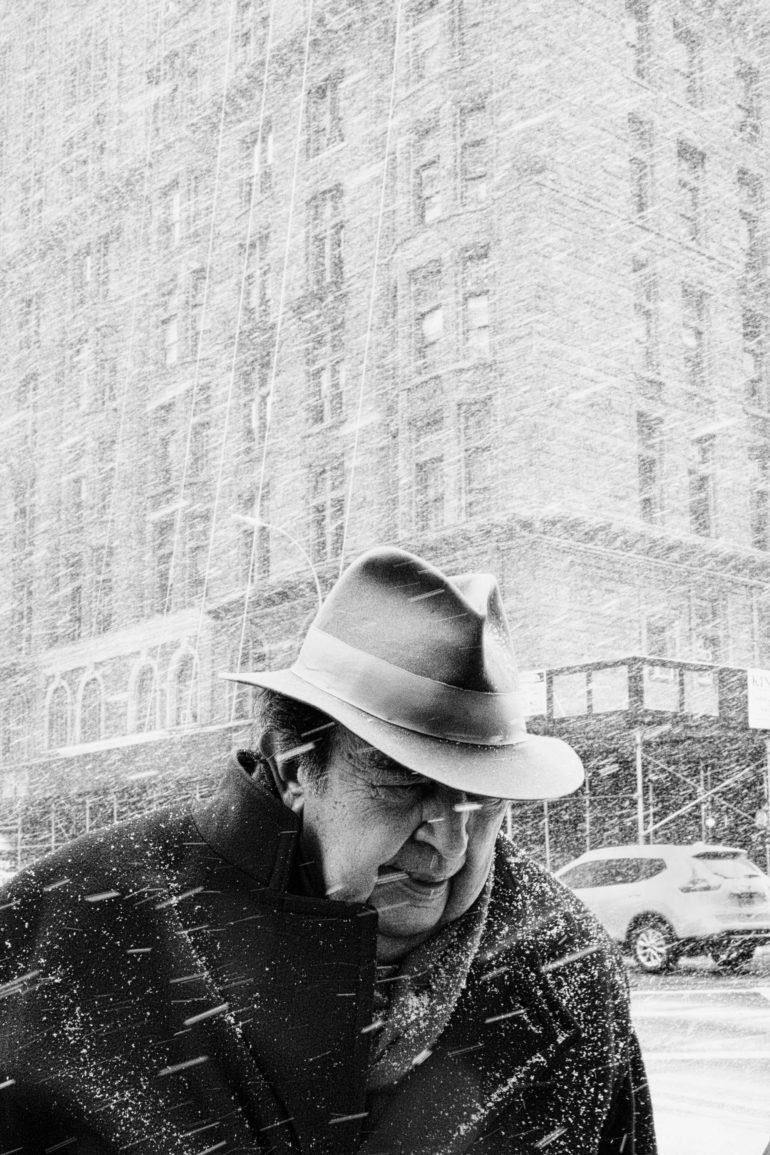
Phoblographer: And finally, you shoot with the X-T3, and you now have the X100V. What is it about Fujfilm’s systems that make you enjoy using them?
NK: In 2015, I bought the Fuji XT1 as my everyday street camera. It has certainly changed the way I shoot on the streets as well as improved the quality of my work. Initially, I was drawn to the camera because of its size and price, but once I saw the colors and black and white tones, I was convinced it was the perfect camera for me. I have since updated to the Fuji XT3 and am super excited about adding the Fuji X100V to my Fuji family.
You can see more of Nina’s work by visiting her Instagram page and website.


